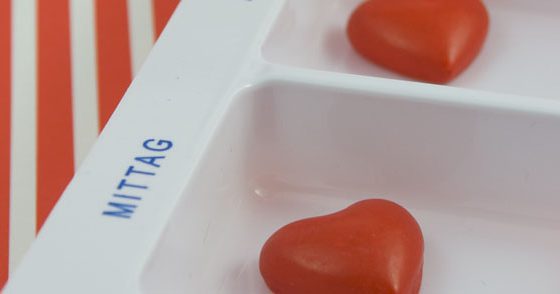The use of the heart-lung machine (HLM) is considered the worldwide standard for surgical myocardial revascularization in combination with cardiac immobilization. Inflammatory reactions due to larger foreign surface area may be the consequence, which is why coronary revascularization without HLM insertion (“off-pump coronary artery bypass”, OPCAB) has been used since 1980. To date, no benefits have been demonstrated, but quite acceptable results can be achieved in the hands of experienced off-pump surgeons.
Surgical myocardial revascularization represents the procedure with the highest long-term survival rate for the treatment of main stem stenosis and multivessel disease despite significant advances in stent therapy.
The worldwide standard here is still the use of the heart-lung machine (HLM) in combination with cardiac immobilization. The advantages of a quiet, blood-free surgical field come at the price of varying degrees of foreign-surface-associated systemic inflammatory response, which can contribute critically to morbidity.
Against this background, it was hoped that the introduction of off-pump coronary artery bypass (OPCAB) in 1980 would be of great benefit. Especially elderly patients, diabetics, patients with impaired cardiac or renal function, or patients with previous cerebral damage should benefit from this supposedly less invasive method.
To date, these hoped-for benefits of OPCAB surgery have not been demonstrated. On the contrary, bypass surgery on the beating heart (off-pump) leads to worse results than the conventional method (on-pump) on the unloaded, cardioplegated heart.
On- vs. off-pump
The large-scale randomized ROOBY trial, which assigned 2203 patients equally to the on-pump or off-pump group, clearly showed that it is not always possible to apply all planned bypasses to the beating heart. Thus, significantly more surgeons avoided complete revascularization in the off-pump group (17.8% vs. 11.1% in the off-pump group; p<0.01). Particularly serious is the fact that the proportion of bypasses still continuous after one year was also significantly lower in the off-pump group (82.6% vs. 87.8% in the off-pump group; p<0.01). These poorer surgical outcomes were also not compensated for in terms of less frequent postoperative neurocognitive dysfunction. Off-pump patients even tended to require longer ventilation and remained hospitalized longer [1]. The primary endpoint of death, repeat revascularization, or myocardial infarction also occurred more frequently in the first year postoperatively (9.9% vs. 7.4% after on-pump surgery; p=0.04).
These disappointing results did not come as a complete surprise. A meta-analysis of several smaller studies already reached a similar conclusion [2]. Surprisingly, even the hoped-for decrease in neurocognitive complications could not be demonstrated [3].
These data were confirmed again in 2012, when 86 studies with a total of 10 716 patients were analyzed in collaboration with the Cochrane Collaboration. Off-pump surgery showed no significant advantages over on-pump surgery. Long-term survival was better in the group operated on with HLM and cardioplegia [4].
The question arises as to why off-pump surgery concluded promisingly in some individual randomized trials, including large-scale ones. This is mainly because these studies were conducted in single, highly specialized centers. Method and results are therefore not transferable to the general public. In the hands of experienced off-pump surgeons, perfectly acceptable results can be achieved. However, they are not better than the results of operations with HLM at centers specialized for this purpose.
Conclusions
Thus, myocardial revascularization with HLM and cardioplegia remains the standard therapy and off-pump surgery an alternative method when use of the heart-lung machine is contraindicated. Our experience in Bern with a miniaturized heart-lung machine (so-called MECC) in more than 6000 patients clearly shows better results in terms of mortality and postoperative morbidity than with a conventional machine.
David Reineke, MD
Literature:
- Circulation 2012; 125: 2827-2835.
- Ann Thorac Surg 2009; 87: 757-765.
- NEJM 2009; 361: 1827-1837.
- Cochrane Database Syst Rev. 2012 Mar 14;3:CD007224.
CARDIOVASC 2014; 13(1): 8-9











